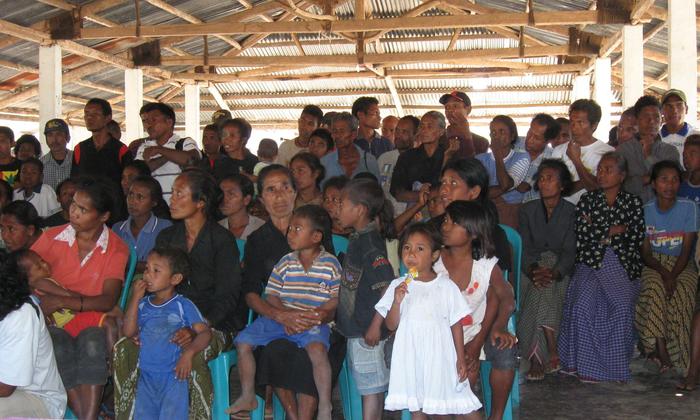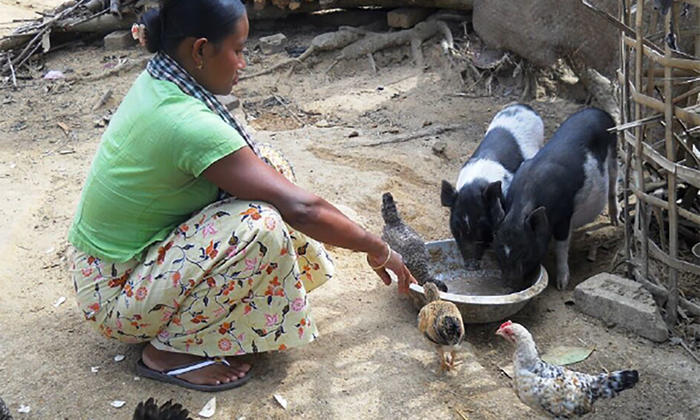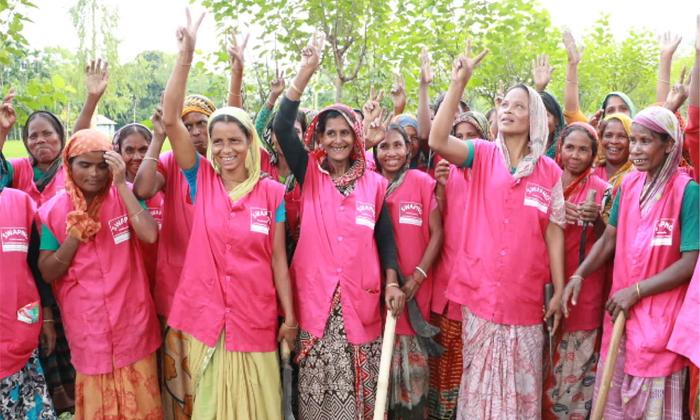Cambodia’s rich cultural heritage is known worldwide and its tourist industry is booming. But tourism has not brought prosperity to the five million Cambodians who live on less than half a dollar a day. Siem Reap Province, which receives 1.5 million tourists each year, is still the second poorest province of Cambodia.
Case study
Women's empowerment through the promotion of cultural entrepreneurship in Cambodia
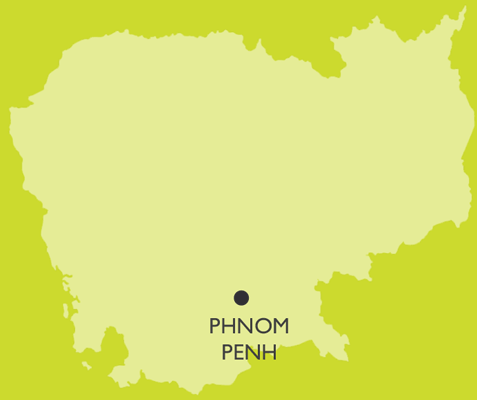
SDGs ADDRESSED
This case study is based on lessons from the joint programme, Cambodia: Creative Industries Support Programme
Read more
Chapters
Project Partners
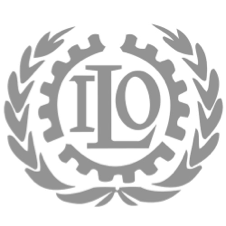



1. SUMMARY
The “creative industries support programme” (the Programme), a partnership between UN agencies and local organizations, supported indigenous and Khmer artisans in four provinces of northern and eastern Cambodia. Its aim was to revive Cambodia’s cultural assets and create jobs, spur economic growth and reduce poverty by developing the country’s creative industries.
The Programme contributed to the preservation of Cambodia’s heritage, cultural diversity, and living arts while promoting their social and economic potential. It improved livelihoods, particularly for indigenous groups and women, through enhanced creative industries and boosted the commercialization of selected cultural products and services in domestic markets.
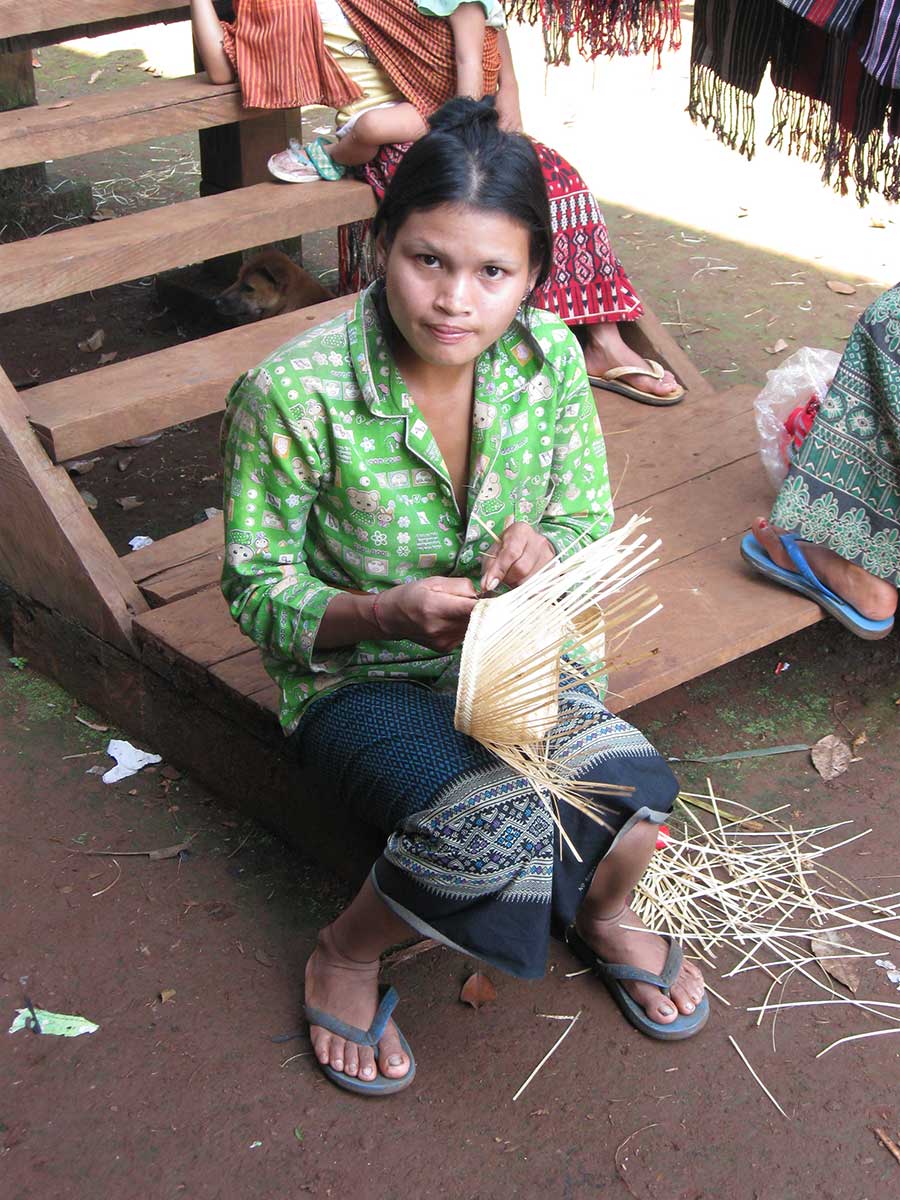
Basket weaver in Ratanakiri
2. THE SITUATION
Rural households in Cambodia were generally poor and relied heavily on agriculture, which was often not enough to feed a household all year round. Knowledge of entrepreneurial skills was limited in rural areas. Most handicraft producers were women, however women tended to be relatively shy when dealing with buyers and middlemen at the marketplace. The Programme sought to build the capacity of women to generate income through traditional handicraft production.
The Programme sought to support the inclusion and participation of indigenous and marginalized groups in four of Cambodia’s remote northern and north-eastern provinces: Kampong Thom, Preah Vihear, Mondulkiri, and Ratanakiri.

Textile weaving in Ratanakiri
3. STRATEGY
The Programme was conceptualized jointly by the four agencies—UNESCO, ILO, FAO, and UNDP—with assistance from a number of locally based development consultants. Throughout the Programme’s early lifespan, however, a series of revisions were made in order to take account of the actual realties in the field. Furthermore, the inclusion of local-level implementing partners assisted the team in pinpointing the most relevant villages and groups to be included as target areas and Programme beneficiaries. For example, prior to the implementation of training activities—on product quality, natural resource management, and rural marketing and business skills—implementing partners conducted a series of fieldwork missions to further understand the needs of beneficiaries and the possibilities of implementing Programme-supported activities.
The Programme was designed to promote the cultural diversity and heritage of Cambodia with the aim of harnessing the social and economic potential of its cultural assets and products. Thus, in order to support the social and economic potential of Cambodia’s heritage and diversity, the Programme focused its efforts on traditional basket weaving and performing arts in all four provinces, as well as a series of other cultural products and assets specific to the peoples and practices of each area, including: jars and pottery (Ratanakiri); resin production (Preah Vihear, Mondulkiri); and textile weaving (Mondulkiri, Ratanakiri).
The target population was selected based on a set of predefined criteria including handicraft tradition, willingness to learn, presence of local organizations, and special attention to local livelihood activities (such as avoiding disturbing harvesting periods). Capacity building through handicraft mentorship programmes, development of entrepreneurship skills, financial literacy, business planning, and rural marketing was designed following consultations with beneficiaries in order to evaluate their specific needs.
The Programme not only operated in partnership with four national level ministries—Ministry of Culture and Fine Arts (MoCFA), Ministry of Industry, Mines and Energy (MIME), Ministry of Agriculture, Forestry and Fisheries (MAFF), and Ministry of Commerce (MoC)—but initiated partnerships with five national-level and nine local-level NGOs throughout its implementation.
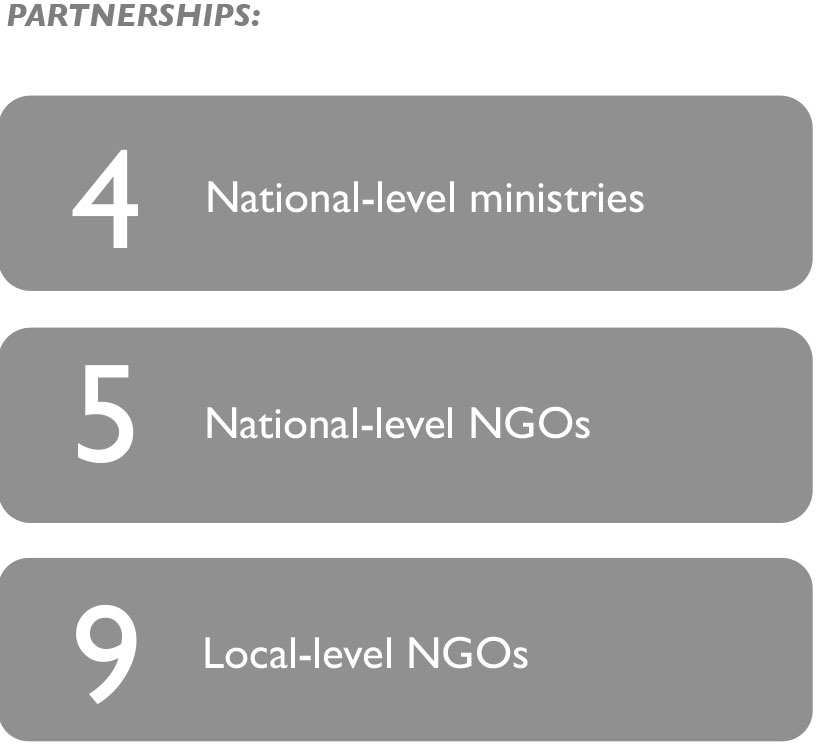
4. RESULTS AND IMPACT
Capacity building programmes were developed to enable 547 local female producers to generate supplementary income by selling their handicrafts. As a result, sales went up on average by 33 per cent (around US$ 50), and women, as producers, owned the revenue entirely which allowed for the purchase of school supplies, medicine, salt and clothes for their families. Training producers (mostly women) in handicraft production, entrepreneurship, financial literacy and rural marketing, enabled them to produce, cost, market and sell their products from home, and lead community producer groups, instead of selling their labour on large plantations owned by landlords. Beneficiaries indicated that they preferred to earn less and do their own handicraft activity at home, rather than work in other people’s plantations, which often meant leaving their household for two weeks at a time. The training also strengthened the capacities of local communities, as women not only produced handicrafts but also did their own pricing, marketing and sales.
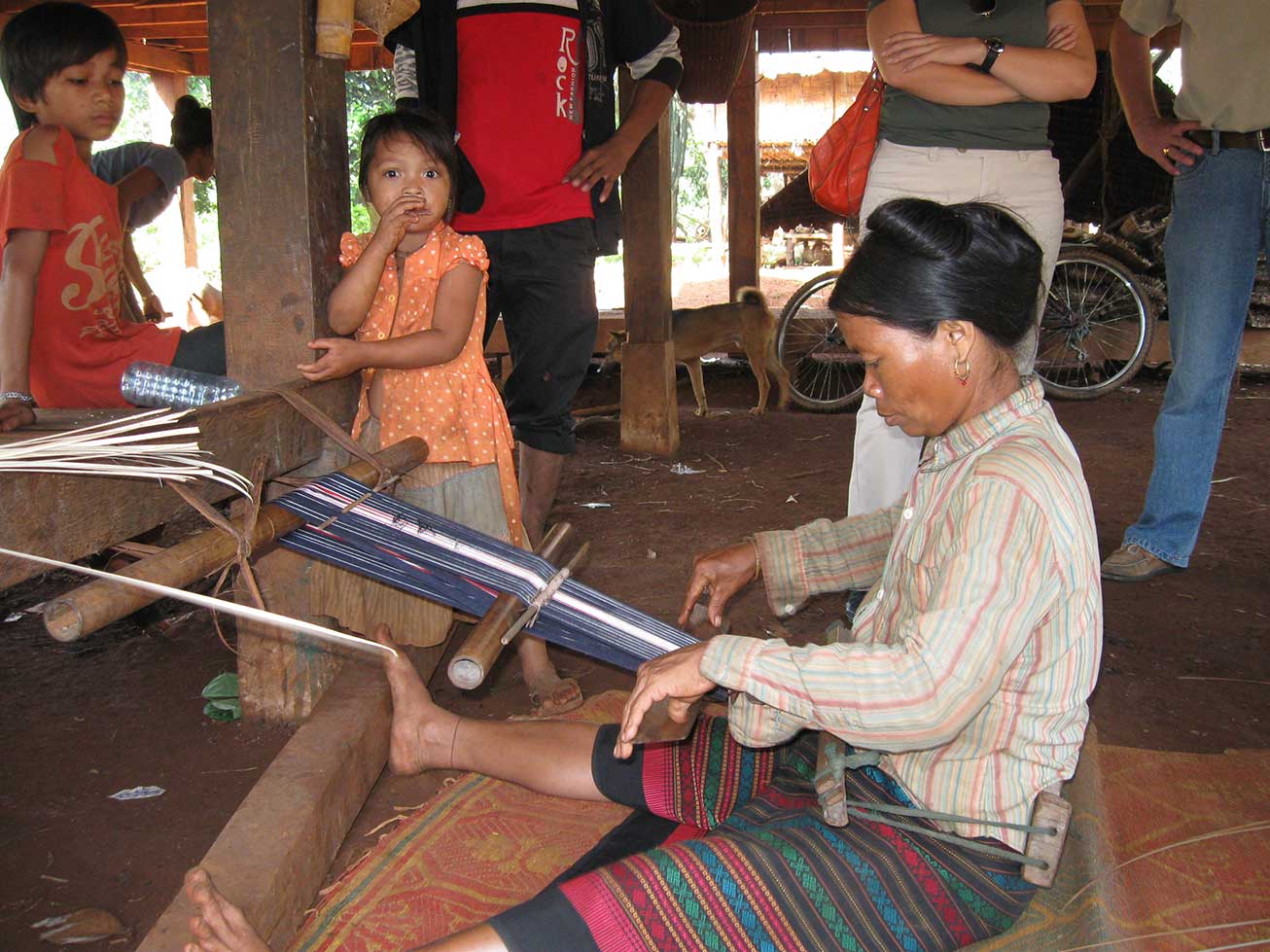
Textile weaver in Ratanakiri
Women generating supplementary income, in turn strengthened their position in the family and earned greater respect from their husbands. This also brought about a reduction in domestic violence. Women became more prominent in their communities. They led producer groups, some of which were officially registered within the Handicraft Association.
Furthermore, these stories demonstrated that development interventions could strengthen the gender agenda, in that a gender-focused approach to a socio-economic goal proved to be efficient and successful.
Some achievements at the institutional level included:
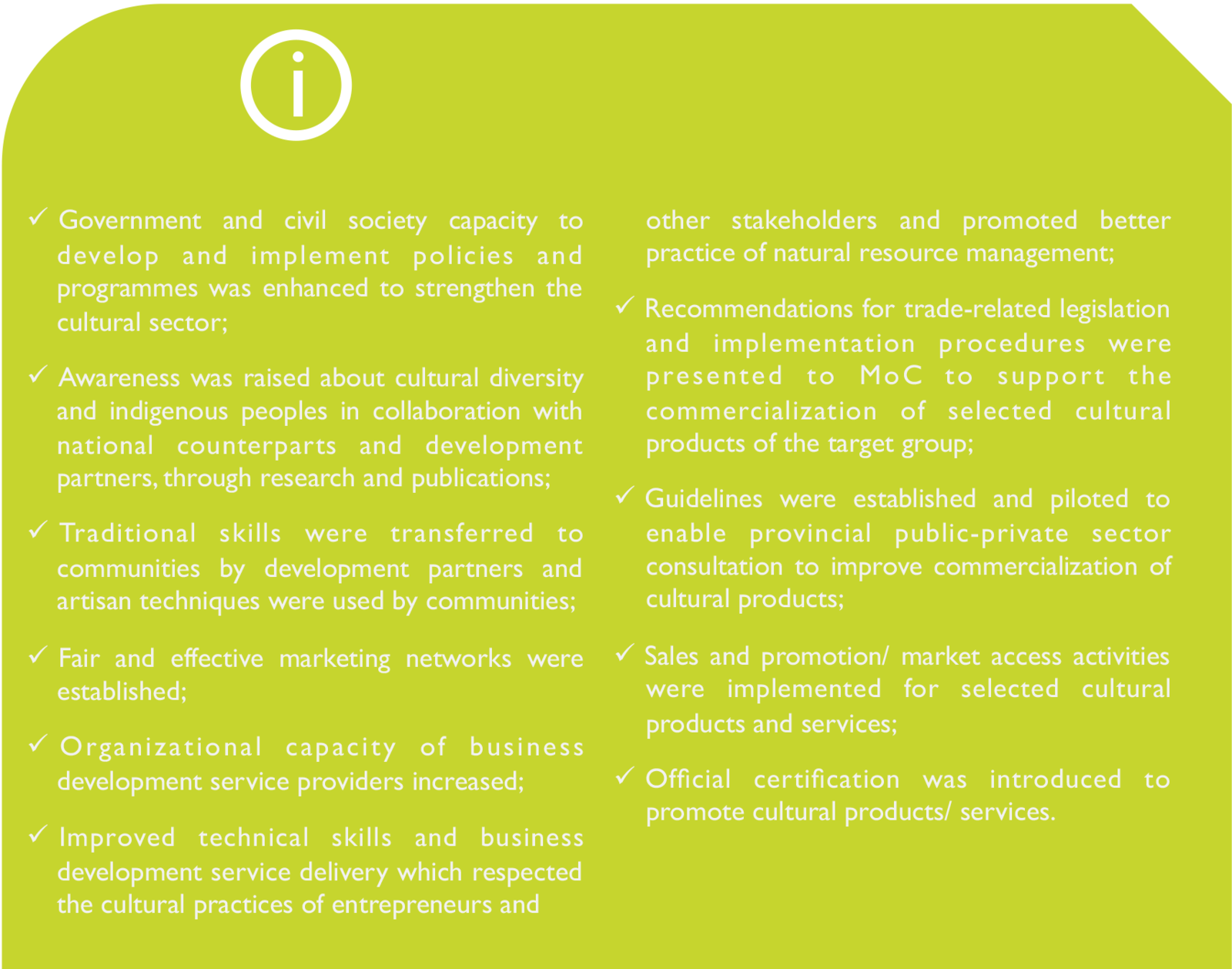
5. CHALLENGES
With the strengths and achievements, the Programme also faced a number of challenges. One of the project’s intended interventions was to rely on business development service providers to train producer groups. In the absence of such services, the Programme opted for local NGOs to do the work. In some areas such as Kampong Thom, the NGO field staff acted as mentors.
Beneficiaries group also faced a number of challenges in their communities. They reported that communication between groups was sometimes a challenge and caused delays in production. They also faced difficulties in finding a market to sell the finished products.
The group of provincial NGOs also raised a number of challenges during the project implementation. In their view, the Programme should have been of a longer duration. They recommended that the four UN agencies continue supporting the existing NGOs and communities.
While NGOs claimed a lot of success with the Programme intervention, they also raised some challenges. They pointed out that the information sharing and communication among the four UN agencies were not sufficient, thus recommending a mechanism for information sharing before activities take place. Though market potential and information gathering were successful, gaining market access was projected to take time, thus they requested continued support and an expanded time-frame for project interventions.
Capacity building programmes were developed to enable 547 local female producers to generate supplementary income by selling their handicrafts. As a result, sales went up on average by 33 per cent (around US$ 50), and women, as producers, owned the revenue entirely which allowed for the purchase of school supplies, medicine, salt and clothes for their families.
6. LESSONS LEARNED
- Cooperation: Good cooperation at all levels with Programme stakeholders - the cooperation was organized among the four UN Agencies, Government Ministries and local authorities, and NGO implementing partners. The Programme’s strength was its ability to ensure community participation, by working collectively with community members, sharing knowledge, conducting regular discussion and feedback sessions and jointly preserving their culture and tradition.
- Structure: National Coordinators pointed to the effectiveness of the Programme structure as one of the key project strengths. This structure allowed for utilization of joint skills in implementing the Programme by the UN Agencies (FAO, UNDP, UNESCO, and ILO) and four Government Ministries (MIME, MoCFA, MoC, and MAFF). The four UN agencies were able to work with one principle, i.e. every operation and implementation involved and consulted all concerned stakeholders and beneficiaries. Strong commitments from the four UN agencies as well as strong facilitation and attention from the UNRC made this joint framework effective. Some other common features of the joint team that made the Programme effective included a joint office, joint meetings and joint missions, joint coordination in each of the target provinces, a common database for use, and common office equipment/facility.

Programme beneficiary
- Publications: Much of the current work highlighting the cultural heritage of Cambodia concerned the temples of Angkor, with little research done on indigenous cultures and ethnic minorities. Furthermore, for programmes of this nature, activities typically revolved around training to improve the production capacity of local producers, while promoting and preserving traditional handicrafts. The Programme, however, also supported the production and publication of academic research on indigenous cultures, traditions and languages. This work was done with an aim to further aid cultural promotion and preservation in Cambodia and possibly encourage both foreign and national researchers in undertaking original research.
- Networks: A number of Programme-supported NGOs developed proposals to continue their activities with indigenous and ethnic minority producer groups, while others stated they would continue monitoring the progress of these groups. As an example, AAC (national-level NGO) would continue working with the producer groups supported by MODE and COWS (local-level NGOs), while CLA (national-level NGO) would carry on with the performing arts group from Yeak Lom.
- Governance: The Programme focused on cultural preservation and socio-economic development; however, due to the nature of the handicraft products being supported, it also worked on natural resource conservation and community development. Furthermore, its work with national and local-level authorities was able to build capacity and develop these institutions, especially concerning public-private dialogue, trade legislation, and proposal writing. Local-level governance should also be mentioned, as communities were encouraged—by NGOs and government counterparts—to replant natural resources and register their land, in an effort to protect against land degradation and deforestation. Registration was also encouraged for community enterprises, as two supported producer groups were able to officially register their enterprises with the MoC (e.g. Kuoy Community Handicraft Association in Kampong Thom, Community Resin Business Enterprise in Preah Vihear). Registration, of both land and enterprises, was important as it allowed indigenous groups and ethnic minorities to take advantage of existing legal frameworks to help protect and preserve land and resources.
- One-Office, One-UN: One interesting aspect of the Programme was the location of its office, as it was granted a room at the compound of the MoCFA, in Phnom Penh. Programme staff could easily contact and collaborate with lead ministry (MoCFA) officials, which facilitated dialogue and the organization of events and activities. The existence of a joint programme office where all staff could sit together—regardless of UN agency—also aided the coordination of activities and the daily management of the Programme. In terms of organizational development, a joint office assisted all staff in feeling as if they were part of one programme, and not simply contracted by a single UN agency, which was an important aspect when thinking about One-UN reform and actually “delivering as one.”
- Documentation: After each PMC meeting, the entire session was transcribed, printed, made into a bound book, and distributed to key stakeholders. For evaluation purposes, these PMC reports were seen as a helpful tool to external evaluators with little or no prior knowledge of the joint programme. Reading each PMC report, in sequence, aided in understanding how activities progressed throughout the course of the Programme, as well as all stakeholders’ opinions on different matters. The PMC reports not only allowed external evaluators to easily understand the joint programme, but also provided adequate knowledge management for stakeholders joining the Programme after its inception.

7. SUSTAINABILITY AND POTENTIAL FOR REPLICATION
Even though the Programme officially ended in October 2011, it continues to show results in terms of increased incomes and skills developed. It also continues to attract funding from different sources. The Programme’s success also contributed to the fact that it was also able to identify key barriers, such as the production and marketing aspects of indigenous products, and tried to use different mechanisms and efforts to address them.
The indigenous products, as reported by provincial NGO implementing partners and the Programme team, were popular during various trade fairs and have started to penetrate national and international markets. CANDO, for example, reported that the newly developed and improved quality and designs supported by the programme are now being recognized in Ratanakiri, Phnom Penh and Siem Reap. The “Craft Shop” in Phnom Penh was buying and re-selling the indigenous handicrafts from Ratanakiri. It is reported that the sales have increased up to 18 per cent as a result of the Programme’s intervention on the improvement of sales and market access.
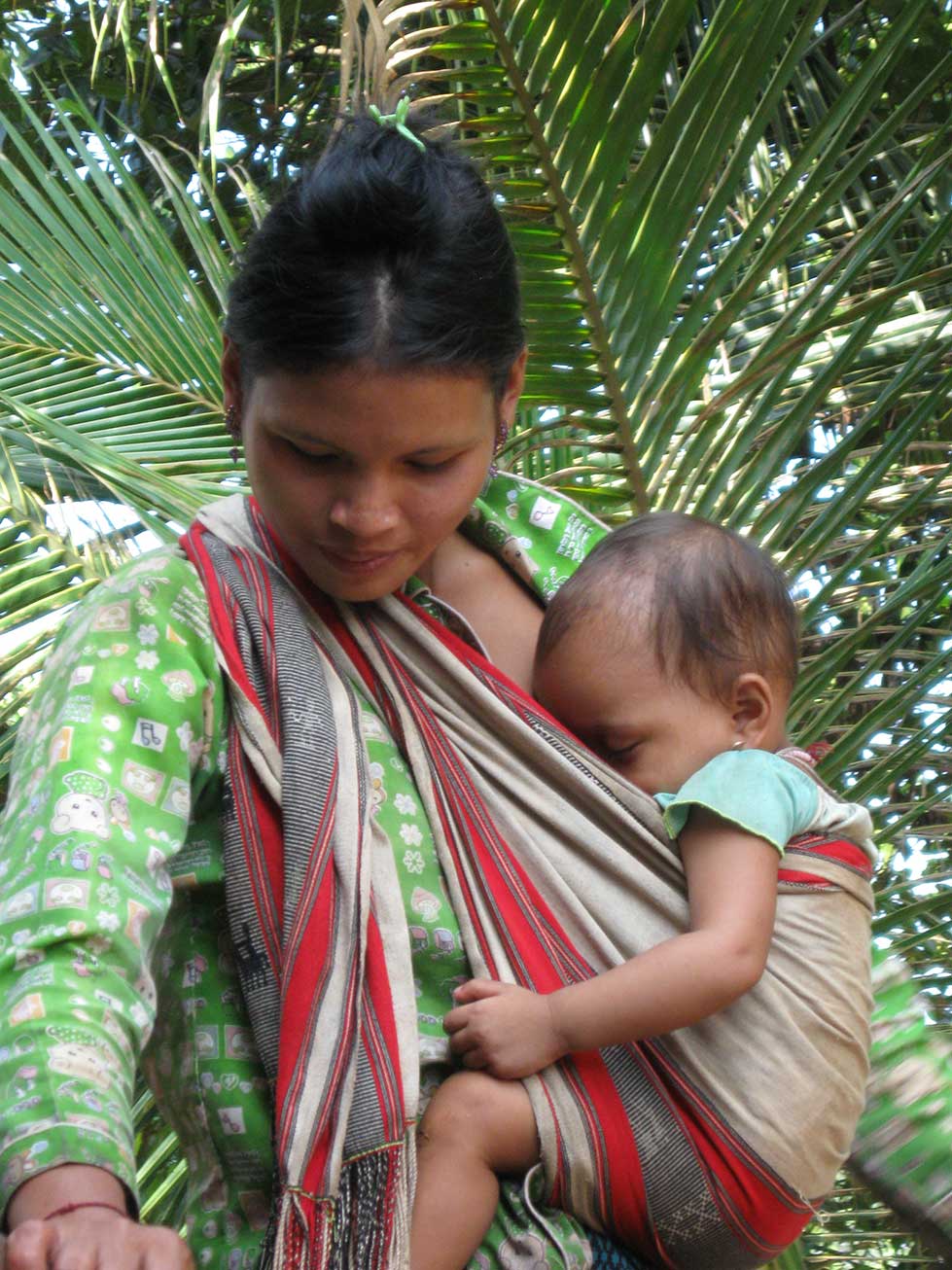
Programme beneficiary
In addition, the Programme documented and published various programme reports, lessons learned reports, training materials and manuals, and research papers. Overall, the Programme was able to leave behind useful trails for future programme design and intervention in the same or different areas.
Also, some of the producers’ groups, such as those for resin and handicrafts, have been formally registered. Completing this process will allow them to become a viable business partner for both genuine partnership and formal access to funding or credit. At the same time, efforts on proposal writing, capacity building on monitoring and group management have expanded the opportunities of local NGOs and producer groups to attract funding from other sources, i.e. UNDP small grants and others.

